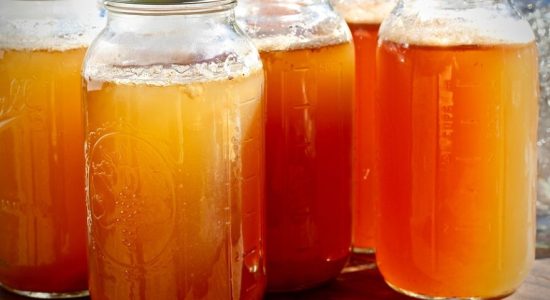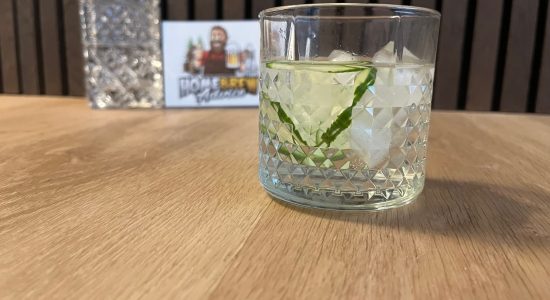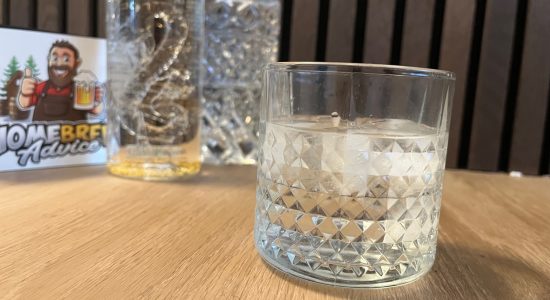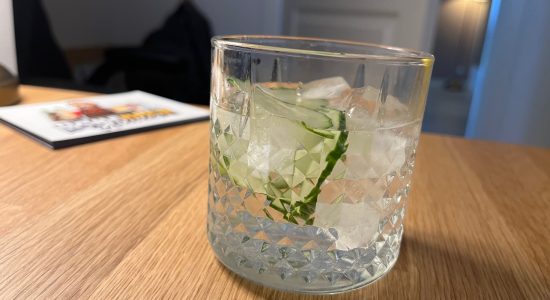What is Gin Made From? Ultimate Gin’s Guide

There’s nothing like the taste of homemade gin.
That’s what I was thinking after taking a drink from a batch a licensed buddy of mine made. After one sip, I knew I couldn’t go back to the store-bought kind, and I was curious to see how it was created.
What is gin made from? The core ingredient of the famous spirit is juniper berries, but the drink also contains a mixture of seeds, plants, herbs, flowers, barley, wheat, grapes, and potatoes, depending on the recipe.
Fortunately, making your own batch of gin is surprisingly easy (though not recommended for legal reasons).
Coming up, I’ll tell you more about this potent spirit, including how it’s made and what is needed to do it.
What Are the Key Ingredients in Gin?
There are a number of ingredients that are necessary for a good gin. Let’s take a look at some of the must-haves for any gin recipe:
Juniper Berries
The key ingredient of any gin, juniper berries are what give the spirit its legal distinction.
They’re also what give the drink its signature pine taste (as they’re more akin to pinecones than other berries), though other ingredients are frequently added to increase the sophistication of a gin’s flavor.
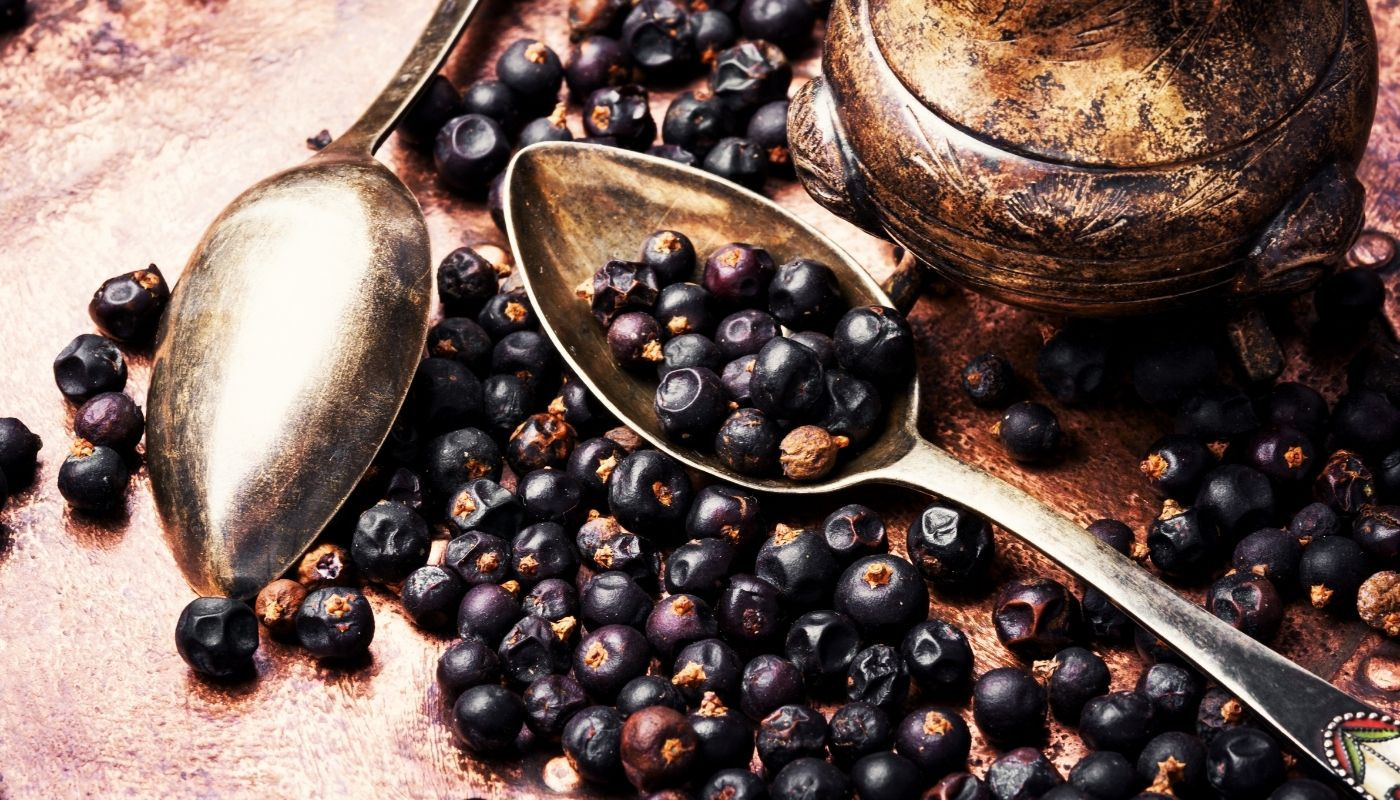
Seeds
One common way to do this is by adding seeds and roots, such as coriander seeds (or Chinese Parsley).
Roots
Roots such as Orris root and Angelica root can also be included to add sweet and earthy flavors that enhance the taste of the gin.
Fruits
Oranges and lemons are also commonly included in order to mediate the strong taste of juniper and add a different dimension of flavor.
Other ingredients such as Chinese cinnamon, cucumbers, and licorice are also added at the discretion of the distiller for unique flavors and signature tastes.
Read Also: Can Fruit Ferment on its Own?
Types of Gins
Like most other kinds of spirits, gins come in a wide variety.
Whether you’re looking for that classic pine taste or more diverse flavors, you have a lot to choose from when it comes to finding the right gin.
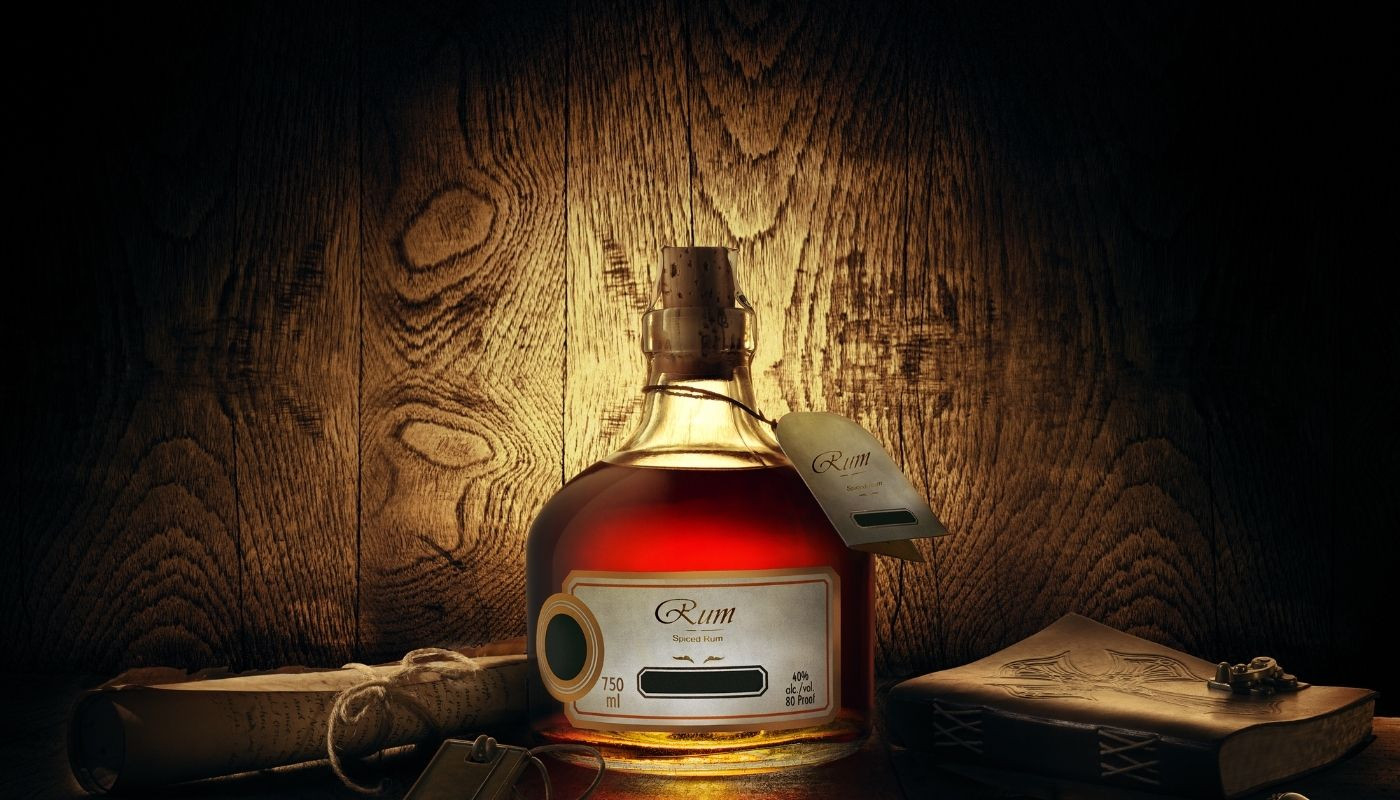
Here are four common types you should be aware of:
London Dry
As the name implies, London Dry is what we call a “dry” gin, or, in other words, a gin that receives no added sweeteners after the distillation process has been completed.
You can imagine, then, that this gin, originating in the UK, has a very strong juniper flavor.
London Dry is also known for its citrus undertones, which can be brought out of the drink when the spirit is combined with lemon and other ingredients in mixed drinks.
Genever
The original gin, Genever dates back to 1500s Holland and still retains its classic robust flavor.
Genever is unique in that it doesn’t use juniper berries as its dominant source of flavor. Instead, distillers who create Genever first produce a malt mash out of the grains that is used to give the drink its signature taste.
Genever cannot be considered a dry gin, as many flavors are added after this process has been complete, including nutmeg, caraway, cloves, and ginger.
The result is a drink that’s a little piney, low on citrus, and extremely earthy and malty in flavor.
Commonly mixed with cocktails, Genever is a great gin for those looking for more basic or whiskey-like flavors.
Old Tom
Another classic, Old Tom hails from the streets of the UK and is one of the most distinct gin categories in the world.
The drink boats a unique reputation: first created in the 18th century, Old Tom was at first a low-end, crudely made drink. This potent spirit became famous for its sweet taste, which was created by adding tons of licorice to the drink after the distillation process had been completed.
Today, Old Tom carries a different connotation.
Though the drink is still sweet and still uses licorice as an ingredient, all flavors are added before the distillation phase has been completed, meaning Old Tom is a dry gin that is best mixed with other liquids when consumed.
Plymouth
Earthy, spicy, citrusy, and piney, Plymouth is one of the most distinct brands of gin on the planet.
With a storied history that has taken it through some of the darkest periods in history, this English brand comes in both normal and Navy Strength so that consumers can choose their desired proof.
Compared to other gins, Plymouth is especially dry, making it a good option for tasting the strong natural flavors that come with its unique mixture of botanicals.
This gin boasts a combination of Orris root, Angelica root, orange peels, coriander seeds, cardamom, and (of course) juniper.
How Gin Is Made: Step by Step
Understanding how gin is made can help you understand more about the product and what you’re consuming.
REMEMBER: Keep in mind that distilling gin at home is illegal without a license.
Therefore, you should take the following information as hypothetical or as simple learning material, not as a call-to-action guide.
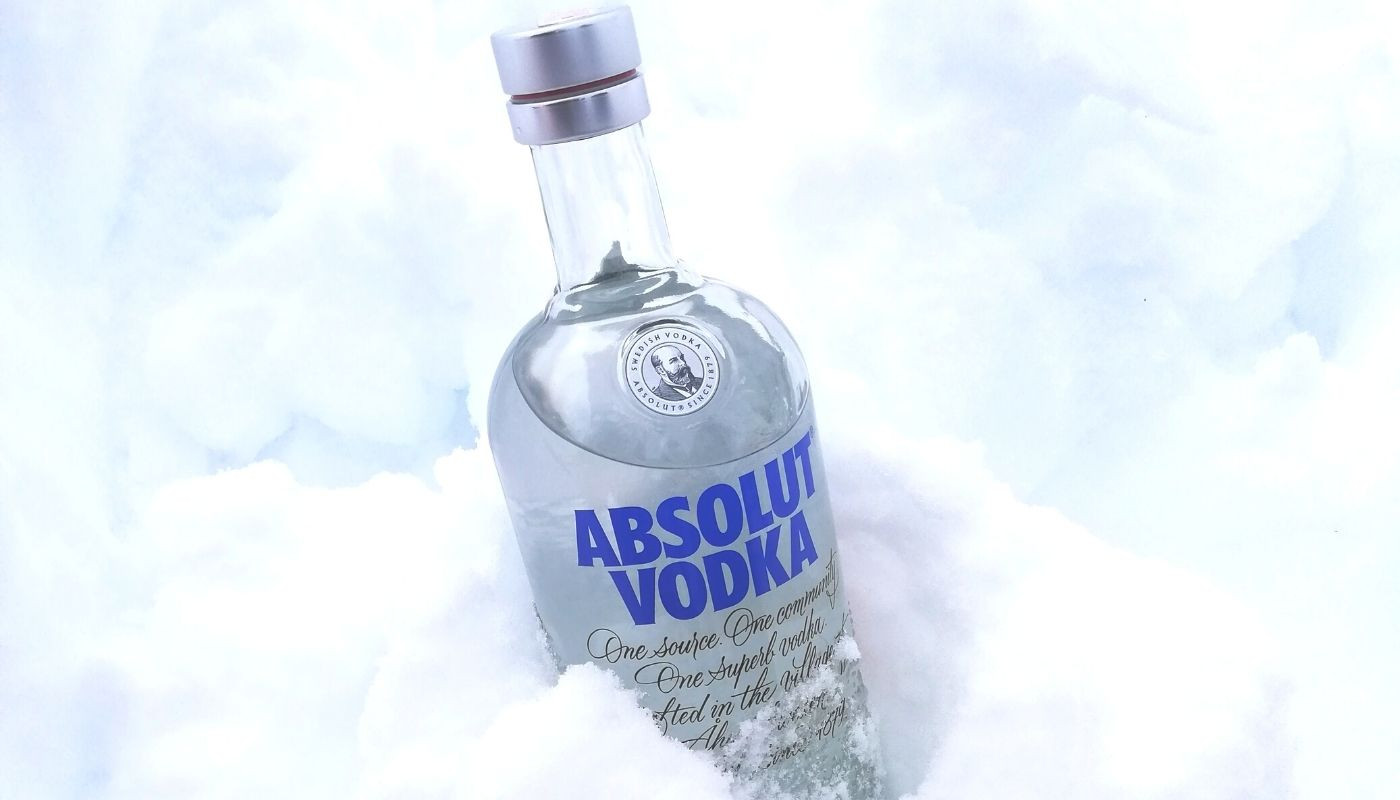
The process of making gin is time-honored and pretty standard, even if the ingredients that make up individual gin recipes vary by distiller.
Let’s take a look at the gin distillation process from the first step to the last:
1. Choosing Your Mash Ingredients
The first step in creating gin is deciding which ingredients will be used for the mash.
Because gins are made from neutral spirits, it doesn’t necessarily matter what ingredients are used here (within a certain scope, of course), as the goal is to get them flavorless.
Typically, mashes are made from grains such as rye, barley, or wheat, though you could also add use fruits such as apples and grapes or other foods such as potatoes and carrots.
Read Also: Easiest Alcohol to Make
2. Making the Mash
For the purposes of this walkthrough, we’ll use a classic recipe that is sure to hit it off.
This recipe requires a mixture of corn (70%), wheat (20%), and malt (10%).
Here’s how to make the mash:
- Pour approximately 6 gallons of water into a pot for brewing (Amazon link)
- Heat your water to 165 degrees Fahrenheit (74 degrees Celsius), then turn it off
- Add in your corn (around 7 pounds) and malt (2 pounds) and stir for about eight minutes
- After this, stir your mash for half a minute every four minutes or so until the pot reaches 152 degrees F (67 degrees C)
- Add in one pound of malt
- Sit for 30 seconds every 20 minutes until the temperature reaches 70 degrees F (21 degrees C)
- Add turbo yeast for fermentation, then pour the mixture between two buckets for approximately five minutes to aerate
- Finally, pour the mash mixture into a fermentation bucket
Once these steps have been completed, you’ll be ready for the fermentation stage of gin creation.
3. Fermentation
Here’s the hard part.
In order to make a quality gin, mashes must be fermented for about two weeks.
For best results, you can test the starch level and alcohol content of your mash with iodine and a hydrometer (Amazon link).
IMPORTANT: make sure that all starches have broken down before moving on to the next step.
Read Also: 5 Best Hydrometers
4. Strain Your Mash
Using a syphon (Amazon link) and a cheesecloth, completely separate your mash water from any solids that are in it.
It’s crucial that you remove all solids, as they could disrupt the distillation process and affect the outcome of your final gin.
5. Choosing Botanicals
Next, you’ll need to choose which botanicals you want to add to flavor your gin.
What you choose here is really up to you, though you must add juniper in order for your concoction to be considered “gin.”
Consider using roots, seeds, citrus, cinnamon, and other common flavors, as well!

6. Prepping the Still
Before you run anything through your still (Amazon link), you’ll want to make sure that it’s totally clean.
Contaminants in the still can alter the taste of your final product, diminishing its quality even if its safe to drink.
You can do this easily with heat, vinegar, and a brush, though you’ll likely need guided assistance if it’s your first time cleaning (YouTube is a great starting point).
Read Also: Best Moonshine Stills
7. Adding Botanicals
In order to add your botanical flavors, you’ll need to put your mix into a cheesecloth.
Fold it and make a satchel, tying off the top. Then, put around 20 inches of copper packing, rolled, into the bottom of your still column. Slowly lower your satchel into the column until it’s resting on the copper packing.
Hook up your water input and output (if applicable) and then follow up by using a siphon to add your gin mash that’s been thoroughly strained.
8. Running the Still
Once all safety protocols are in place, run your still, slowly raising the temperature to 150 degrees F (66 degrees C).
Turn your condenser on (if applicable) and raise the heat even more (to the high setting on your machine) until you are getting between three and five drops a second. Reduce heat to medium once you reach this rate.
Read Also: Best Propane Burners
9. Collecting Distillate
Your machine is running and producing still! You did it! It’s not quite over yet, however.
REMEMBER: Collecting the wrong alcohol can be dangerous, as the methanol and other substances in the spirts have yet to be diluted.
As methanol poisoning can cause blindness and death, it’s extremely important that distillers know which alcohol to collect and which to throw out.
The foreshots (the first 5%) and the heads (the next 30%) are both too dangerous to drink. Throw them out safely. The hearts (the next 30%) are a distiller’s gold-mine distillate and are the main batch of your gin. The remaining 35% are called the tails, which can be recognized by the amount oil they carry.
While these aren’t fit to drink immediately, they can be rerun through the machine to extract even more workable gin.
10. Diluting the Gin
Once your gin has come out of the machine, it will be extremely high proof.
You’ll want to dilute it until about 80 proof (or 40% ABV). First, take a reading of the ABV and then use a calculator to determine how much water needs to be added to the product.
Using distilled water only, add the indicated amount until you reach the desired proof.
After these steps have been completed, you’ll have a flavorful gin that needs only to be stored or bottled at your discretion.
Read also: Gin alcohol percentage vs Other liquors
What Spirit Is Gin Made From?
Like vodka, gin is made from neutral spirits. In other words, the base ingredient for gin is extremely concentrated alcohol that has been distilled to a minimum of 190 proof (or an ABV of 95%). It’s important to note, however, that the spirits that form the base of gin can be made from a variety of mashes, including potatoes, honey, apples, carrots, grapes, and more.
Generally, these neutral spirits are made out of grains and are colorless, odorless, and flavorless, so as not to affect the taste of the final gin. It’s important to note, however, that the spirits that form the base of gin can be made from a variety of mashes, including potatoes, honey, apples, carrots, grapes, and more.
Read Also: What is Vodka Made From?
Is Gin Gluten-Free? Explained
Gins are most commonly made from wheat, barley, and rye. However, all pure gins are by nature gluten-free, making them safe to drink even for those with celiac disease.

Here’s why:
When these grains are put through the distillation process, they begin to weaken. Over time, during the creation of pure gin, these grains are distilled to the point that no gluten remains.
Non-pure gins (such as those that add extra ingredients or flavors after the distillation process has been completed) may contain gluten.
If the gin is produced in a location that makes other spirits with gluten-based ingredients, gin may also suffer from cross-contamination.
For this reason, it’s best to go with pure gins from a trusted brand if you’re looking for a gluten-free option.
Are Gin and Vodka the Same?
If you’ve got a basic understanding of both gin and vodka, you may be wondering what the difference is between the two. At first glance, it may appear as if gin is essentially flavored vodka.
And, essentially, that’s right. Gin and vodka are more alike than they are different, but that doesn’t mean that the differences between the two aren’t significant. The most notable difference between gin and vodka comes in the fact that, while gin is flavored with juniper berries and other substances, vodka is distilled to the point of having no taste.
Furthermore, unlike vodka, gin can be mixed with other drinks. Vodka, on the other hand, cannot be used as an ingredient in mixed drinks.
For a more complete list of differences between the two, make sure to check out the following blog post: What is the difference between gin and vodka?.
Conclusion
Gin is one of the West’s most celebrated alcohols.
Time-tested and rich in variety, this incredible spirit is a staple at bars across the globe. In this guide, I tell you everything you need to know about gin and how it’s made so that you can gain a better understand of the drink.
If you have any questions about this alcohol, make sure to refer back to this guide to stay on top of your gin trivia and important know-how.


